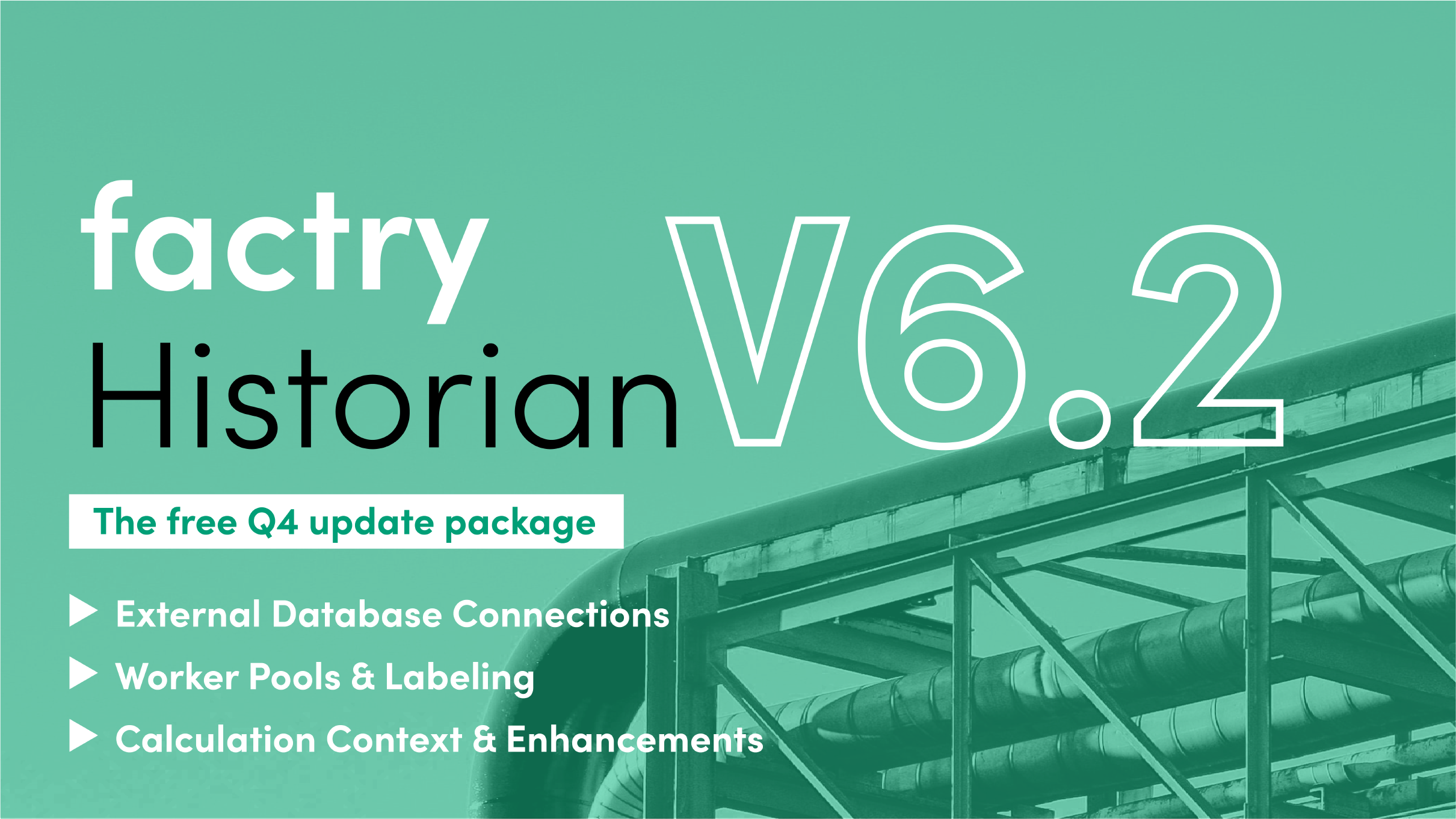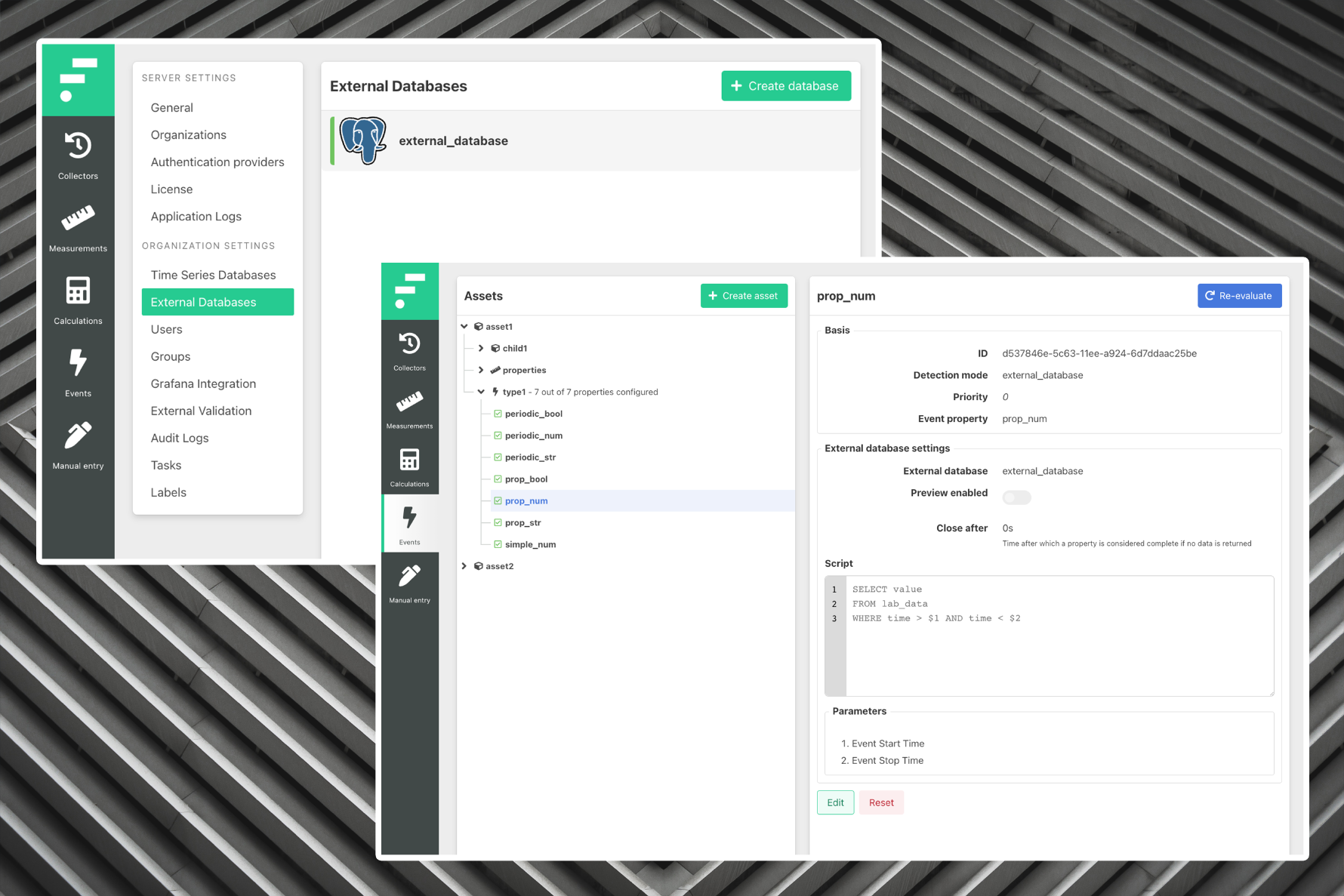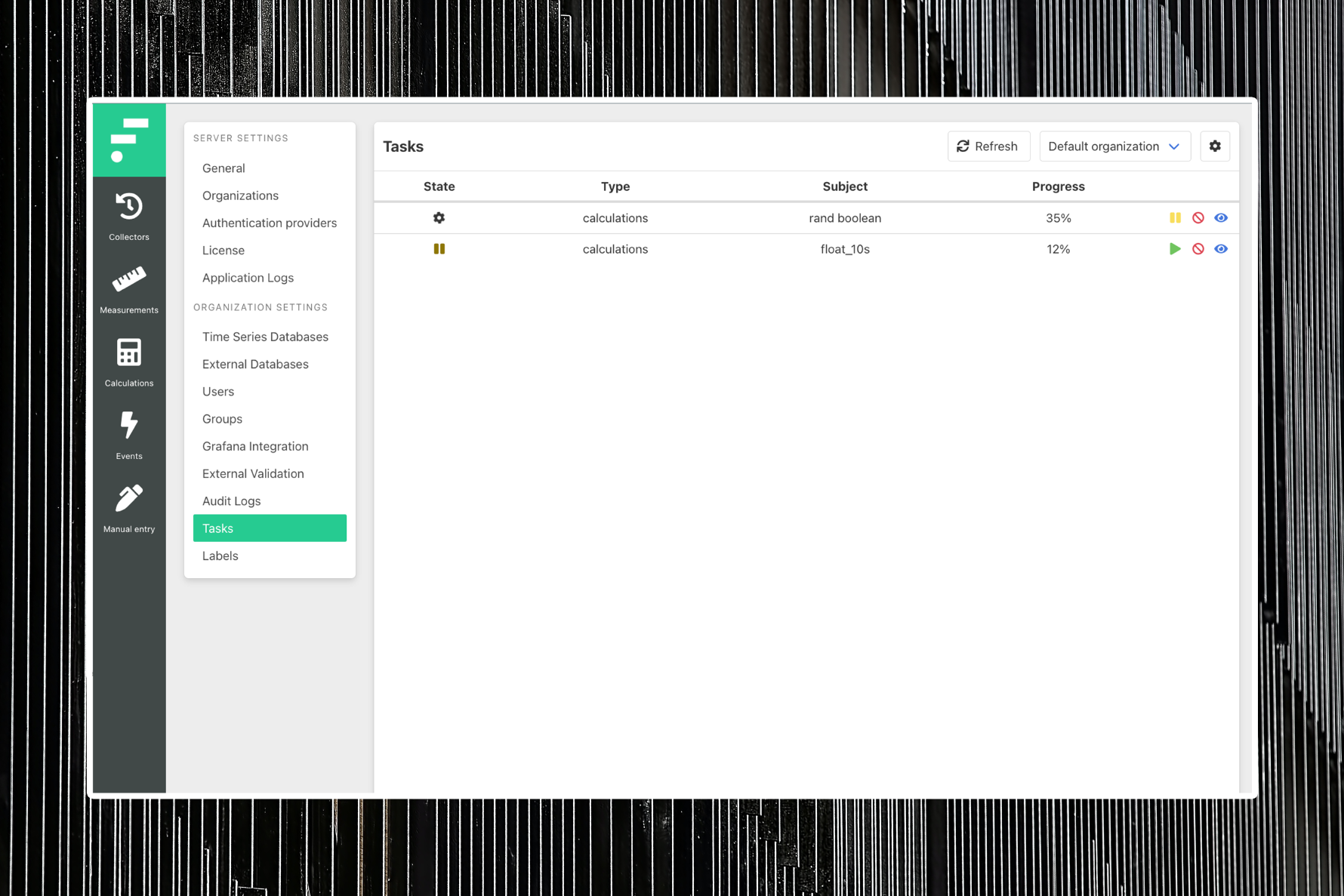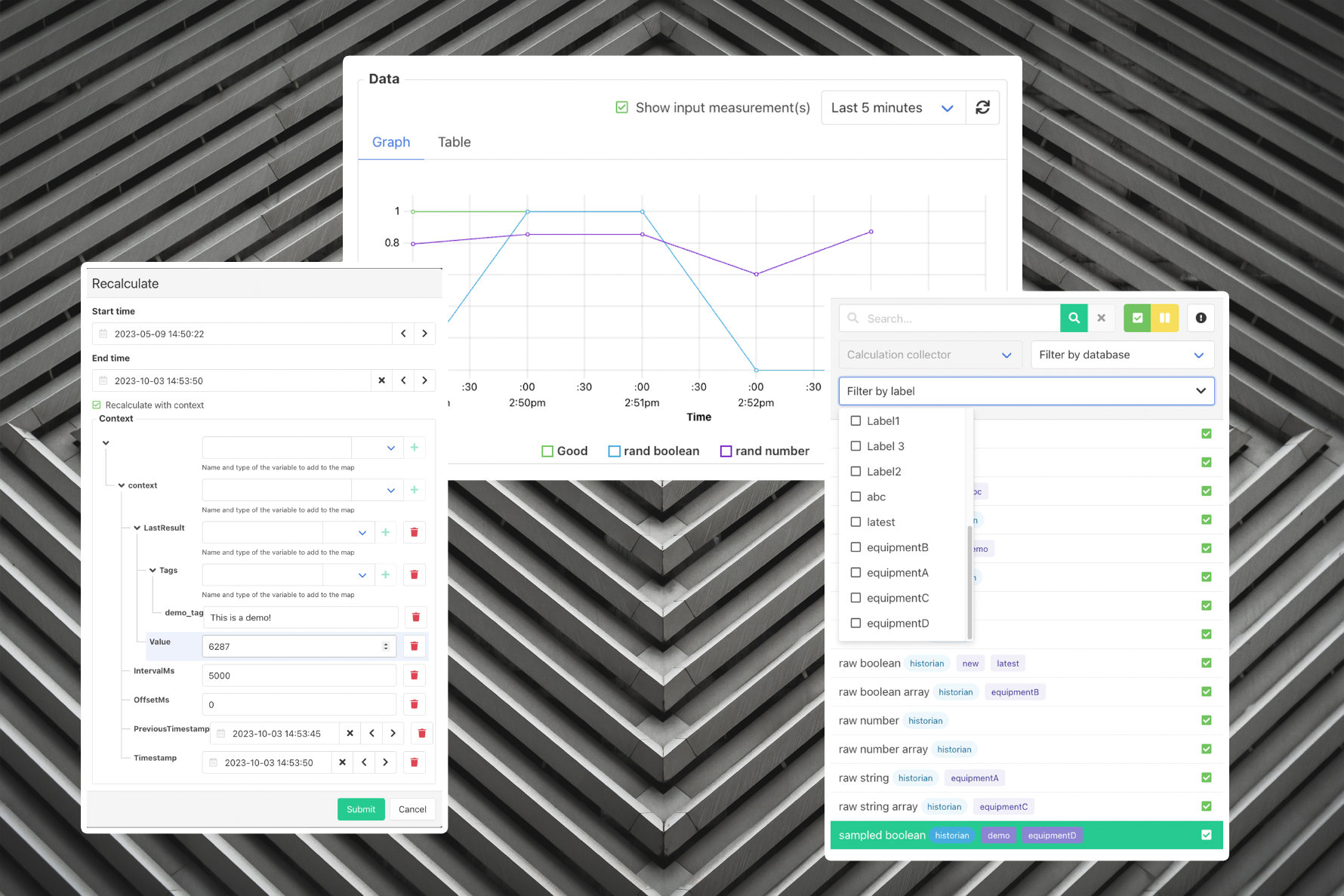Factry Historian v6.4: A new step towards simplified administration
Before we let the big ones fly, Factry Historian v6.4 marks a product update focused on perfecting the functionalities you’ve grown to depend on.
Jeroen Coussement on , updated
With the release of Factry Historian v6.2, we’re unveiling a world of improved usability and superior performance. Designed for power users, this update is not just about what you see on the surface. It’s about enhancing the core functionalities that drive your experience.

Witness these improvements first-hand in a free webinar on October 26, 2023.
Incorporating a series of new functionalities, Factry Historian v6.2 adds external database connections, more context to calculations, streamlined task management, and introduces subtle yet impactful enhancements. Find out how this release will further transform how you interact with process data.
Here's what's new:

Seamlessly link lab data, quality metrics, or any other process measurements stored in separate databases directly to Factry Historian.
Process-related metadata sometimes resides in structured external databases, rather than the time series format within Factry Historian.
External database connections now enable you to bridge the gap between time-series data and external SQL databases, including prominent platforms such as PostgreSQL, Oracle, MySQL, Sqlite3, and SAP (hdb and ASA).
While it was possible to create these types of integrations in the past, they were custom-made. For instance, integrating a LIMS database required a custom connector, while it lacked the universality required for broader applications.
The implementation of external database connections now allows linking production data, quality metrics, or any other process-related measurements stored in separate databases directly to Factry Historian.
This new feature not only eliminates the need for cumbersome custom connections, but also allows you to better interact with your process data and harness its full potential, without the hassle of juggling multiple databases.
Integrated with the Event Module, external databases can now serve as a detection mode for event properties. To utilise this feature, an SQL query is required. Comprehensive examples can be found in the documentation.
You can now use event parameters to fetch context from the current event, such as the start and stop time, and use these in your query to fill up the event property. Or you can even fetch the result of other properties on the same event to make use of their values in your query as well.

A new Worker Pools feature offers users more control, and visibility on running tasks, while improving system stability and performance.
In the past, tasks such as recalculations, data exports or deletions, ran without a clear status update. You initiated them and waited, unaware of their progress. Factry Historian v6.2 changes the game, introducing Worker Pools.
Worker pools act as designated spaces for specific tasks, each with individual configurations. Users gain real-time insights into active tasks, and can now pause, resume, or cancel tasks at will, ensuring more flexibility and control.
System administrators can now precisely dictate how many tasks can run simultaneously. This approach prevents performance hits and allows for smoother operations, even during intensive processes like recalculations.
While this feature is currently limited to recalculations, future releases will extend this level of control to various task types, including workers for events, providing users with even more visibility and management capabilities.

Store, modify, and delete variables for enhanced calculation context. Precisely define starting points for accurate historical recalculations.
Let’s say you need to track the cumulative value of certain parameters, such as production units, over time. Before, retaining information such as previous results and timestamps was only possible in a cumbersome way. From now on, you can not only store these context variables, but also modify and delete them as needed.
Or just another example: let’s say you need to reevaluate your calculations from a specific point in the past. With this new update, you can define precise starting values for your scripts, ensuring accurate historical recalculations.
This generic feature offers users the freedom to explore complex data scenarios without constraints, opening a new world of use cases.
Within the historian’s web interface, users can consult the stored variables, tags, intervals, and timestamps associated with the result of previous calculations.
The interface displays variables, tags, intervals, and timestamps visually, simplifying complex data for users of all technical levels. Detailed line numbers and visual cues provide instant error recognition, enhancing UI.
The hierarchical structure of this new feature allows for granular control over these calculations and enables end users, even without any technical skills, to surface more advanced production insights in a highly visual way.
Users have the ability to set Influx tags (metadata such as the status or custom tags) in the calculation script, and see these within the context as well. This can be useful for more complex use cases, and brings more clarity to power users.

In addition, we have implemented a number of smaller adjustments, focused on improving the usability and performance of our software.
Calculations:
Events:
Labels:
Revolutionise how you interact with process data. Join us in a live webinar on October 26, in which Lead Data Engineer Jeroen Lavens and Historian Product Owner David Dierickx will showcase these new advancements in action.